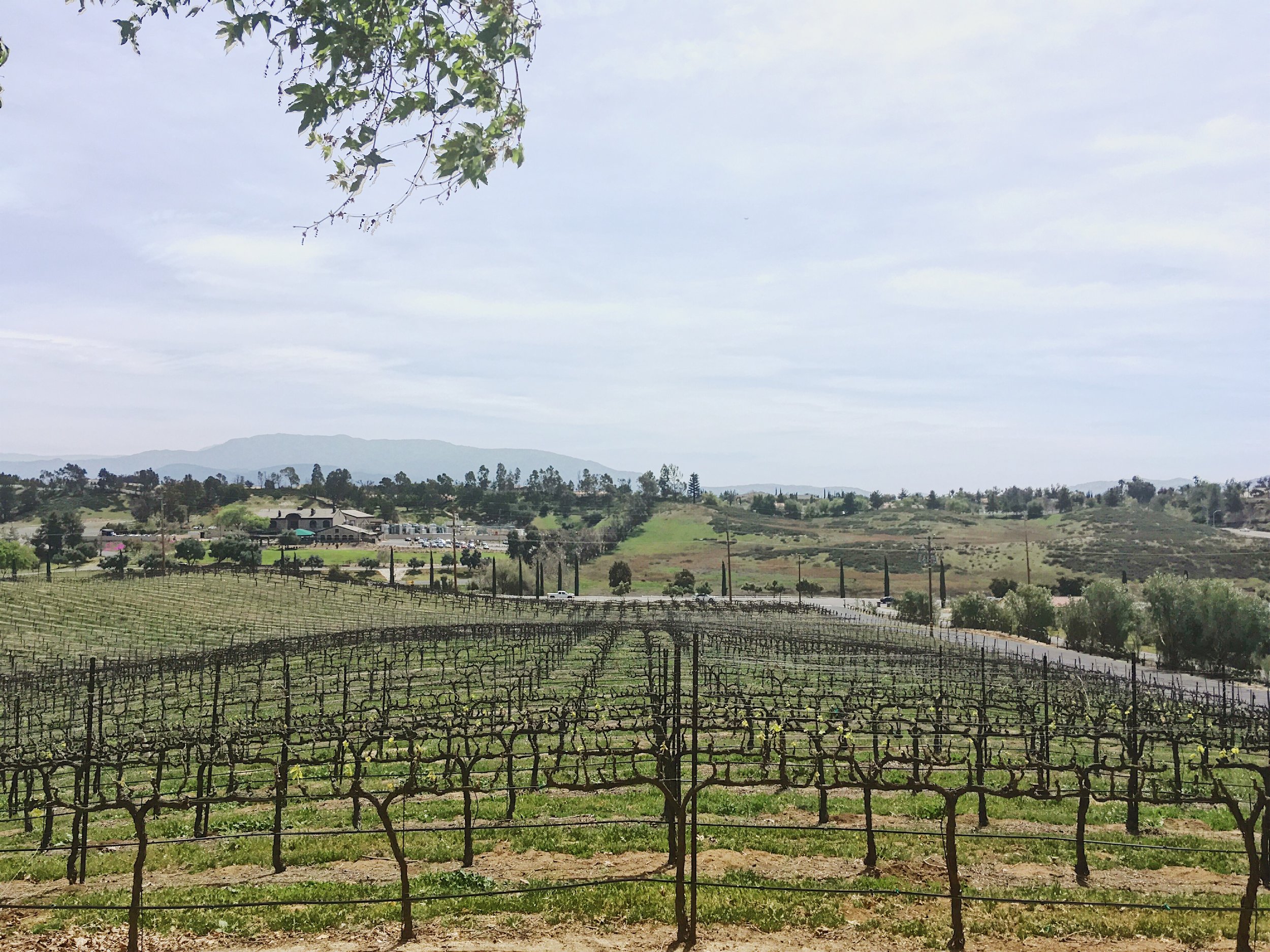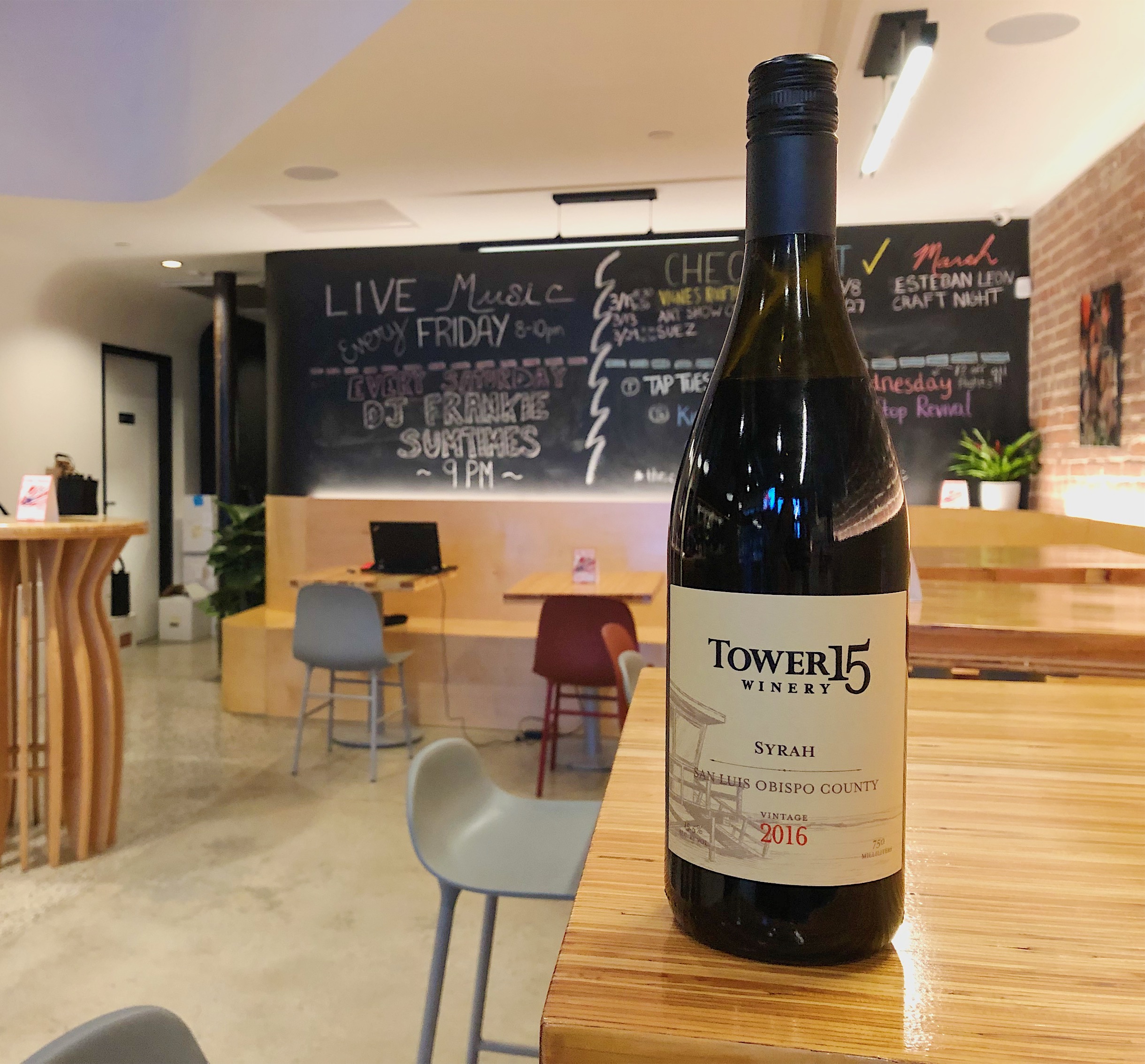Wines of Southern California
Hart Winery
California’s wine country doesn’t begin and end north of San Francisco.
All photos by Maggie Rosenberg.
Celebrating southern Californian wines isn’t meant to cause any petty in-state rivalries between wine regions. The Central and Southern Coast of California have become host to younger and larger wine regions offering a dynamic range of winemaking styles. One of the best things about living in a Southern California city is that you’re never too far from forests, mountains, deserts, farmlands, and, of course, vineyards. For businesses located in SoCal, showcasing wines grown around California’s population center takes pride in local agriculture and shrinks our carbon footprint. Nothing beats drinking a wine near where it is grown, even if that place happens to be a sprawling, concrete grid. Los Angeles is the biggest city in California. Increasingly, Angelenos are adapting Santa Barbara County as their weekend wine escape. With regular tourism comes a strong connection to the wines. More restaurants and wine bars are starting to call Santa Barbara the local wine country.
Santa Barbara
Santa Barbara Winery, the first in the county since Prohibition, is featured heavily on Los Angeles wine lists. Founded in 1962, they remain an influencer of viniculture in the southern half of California. Winemaker Bruce McGuire has been with the winery since 1981. He’s one of the first advocates for pinot noir in Santa Barbara, and his long tenure here has given Santa Barbara Winery an uninterrupted string of vintages from the same vineyards and winemaker in the Central Coast’s most famous county for wine. Santa Barbara was awarded Sta. Rita Hills Winery of the Year for 2018 in the New York International Wine Competition.
Pali Wine Co.’s tasting room is a new addition to the L.A. Arts District and is the newest branch in a chain of urban wine bars from the Santa Barbara Wine producer. Their cellar of Santa Barbara and Paso Robles is deep enough that they can regularly switch around their by-the-glass selection for flights. Our favorite thing about drinking at Pali is their smart use of draught wine to bring in fresh experiments from the winery. You can even buy growlers of wine to take home. It fondly reminds us of filling up jugs of bulk wine when visiting European villages, but here they bring Santa Barbara to the city.
Closer to the City of Angels
There are AVAs that are even closer to Los Angeles than Santa Barbara. There are even a few that are situated within L.A. County, including two in Malibu, and the little known Antelope Valley AVA in the Mojave Desert. For instance, the Angeleno Wine Company has been bottling wine from their home vineyard just outside of Santa Clarita, and they are currently set to open a tasting room in Downtown Los Angeles by 2020. Their wines utilize Spanish varieties not commonly seen in California, like godello and graciano. This could be what shapes the identity of what Los Angeles County wine becomes.
One of the largest wineries in the greater Los Angeles area is the kosher winery Herzog, which is in Oxnard. This is one of the easiest local wines to find in Los Angeles, as they are featured at pretty much every kosher restaurant in town from Fairfax to the San Fernando Valley. The fruit for Herzog wines comes from all over California, but several of their lines, like the Eagles Landing wines, use grapes from the Paso Robles and Santa Barbara. Herzog was awarded Kosher Winery of the Year for 2018 in the New York International Wine Competition.
Wine Local to San Diego
San Diego is Southern California’s second city. However, few outside of it know that it is actually surrounded by small wine growing regions with a vibrant and accepting scene for local wine.
The nearest local wine country is the happy gathering of tasting rooms in North County between Escondido and Ramona in the Ramona Valley AVA. However, for many in San Diego, when they think of wine country, they think Temecula. The area is only an hour from San Diego, and has more of a reputation for being a fun place to guzzle wine than a serious wine region, but as San Diegans embrace locavore culture a demand for better wines has been declared.
The first vines were planted here by Vincenzo Cilruzo, the father of Vinnie Cilruzo, the famed brewer/founder of Russian River Brewing Co. A region with over forty wineries and a lucrative tourism industry has sprouted up around Vincenzo’s plantings. Today, the oldest continuously family-owned winery operating in the Temecula Valley is the Hart Winery, founded in 1980. Unusually, they produce fortified wine with the aleatico grape from the Isle of Elba. They also farm the oldest vines in Temecula, with centurian plantings of the Mission grape made into fortified wine.
One of the best places to taste Temecula wine in San Diego right now is the Callaway Winery tasting room in the Gaslamp District of Downtown San Diego. Callaway was one of the first wineries in the Temecula Valley, founded in 1969 years before Temecula was even incorporated as a city. They’ve changed hands over the years, but the winery’s journey opening a tasting room in the heart of San Diego reflects decades of evolution for a wine region that is still proving itself.
Pali Wine Co.
A case for San Diego County fruit
Although it’s less of an established wine region, San Diego County fruit has more young advocates in the city than Temecula does these days. Los Pilares is a sulfur-free natural wine darling specializing in pétillant natural (pét-nat) sparkling wine from 100% San Diego County fruit. Another winery, J. Brix, has been utilizing San Diego County fruit since back when few other hip wineries have thought to. Their Rougarou is a carignan made from fruit just around the bend from their Escondido-based winery. Across the street from the production facility of J. Brix, is Vesper Vineyards, which uses San Diego County fruit for nearly all of their wines. All of their wines are single-vineyard expressions that form a taste map for the county’s young wine scene.
It took Americans many years to believe in our domestic wine. The next step will be for cities such as these in SoCal to embrace local viniculture. We’re looking forward to local wine being featured at more bars in cosmopolitan centers all over the world. Just because you can get wine from most corners of the globe in major cities doesn’t mean that you shouldn’t taste what is being grown down the road.
The next NY International Wine Competition is coming up May 5! Please click here for more info on the benefits to submitting your wine.


